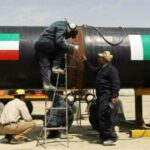With 70% of the labor force in the agriculture industry, female farmers constitute the most important link. Ironically, they are also the weakest link in the industry since their contributions are not acknowledged or recorded; instead, they are viewed more like unofficial, private assistance than as formal labor in the legal, conventional sense. The unsung heroes are these people!
But the issues they deal with in the field go much beyond this missing evaluation of their impact. Three main kinds of female farmers were identified by researchers: landowners, family farm laborers, and laborers without land. The first group consists of a very small percentage of people who are either widowers caring for land after their husbands pass away or inheritors of some ancestral land who are either studying in cities or inheritors of some ancestral land.
The majority of people belong to the second group, which also includes those who assist their husbands or sons in the fields while working on their own tiny holdings. About 40% of landless farmer families residing in rural or city-suburban areas make up the third group. Usually, when discussing the issues facing female farmers, one falls into one of the final two categories.
In the first case, the land inheritors are primarily absentee landlords due to two factors: their inability to manage fields and their low land rental rates.These daughters of large landlords prefer tenants and want to avoid issues because they have never been involved in agricultural techniques.
More time is spent by rural mothers tending to livestock than with their own children.
The majority of them lease out their land and receive a set annual payment because lease prices have significantly increased as a result of the introduction of cash crops and the three crops per year cycle. These farmers make up fewer than 1% of all farmers, thus they are scarcely significant in the grand scheme of things, according to Vehari local Samina Agha.
Because their land holdings are too small to allow for outside employment, the vast majority (more than 90 percent) of farming families in the second category employ their women in agricultural techniques. Women’s rights campaigner Bushra Khaliq states, “Since women’s participation here is a complex whole of traditional socio-cultural factors, they neither complain of exploitation nor insist on quantifying their contribution.”
This is the final class, with over 40% of the workforce being supplied by landless families, who employ the majority of women. Due to their persistent accusations of various forms of exploitation and their desire for legal protection for labor, this class has been the subject of inquiry by academics and non-governmental organizations.
Activists identify issues that these two groups have in common. They claim that there are neither set working hours nor labor wages because the whole relationship between farmers and female laborers is informal.
Based on agricultural and weather circumstances, the labor is seasonal and does not arrive consistently or in equal amounts. Nothing in this place is indentured; instead, it is regularly and harshly exploited after the fact.
Expert in social development Sumaira Ishfaq explains the background of the issues by stating that femininity defines women’s involvement in certain sectors. Due to their lack of training, they have less farming expertise than their male counterparts, which lowers their production and, thus, their pay. They rarely oversee large machines or physically demanding tasks.
To lessen their reward, all of these elements are exploited. This is true even though none of these elements were created by women. Though they bear the brunt, Ms. Ishfaq laments that no government body provides them with training on crops or machinery.
Think about it: all of this exploitation is taking place in a legal vacuum. This is something that grieves Akeela Naz, who has spent the previous 20 years working on issues related to female farming.
Sindh has started the process of giving women on the field legal cover under the caretaker arrangement. Punjab, which is proud to control 80% of the country’s agricultural output, has yet to establish one. She said, “We hope that the Punjab’s first female chief minister will spare some time and look into this issue.”
Women now make up well over 90% of those working in the agriculture industry when it comes to livestock, which currently makes up 62% of the total. Rural women tend to their cattle more than their own children, as the saying goes. Poultry and livestock farming are exclusively the domain of women. However, their understanding of both is traditional and devoid of contemporary perspectives. Training is required to update all of this,” asserts Bismillah Iram.
Nothing would happen in isolation, according to Agriculture University Faisalabad Vice Chancellor Dr. Iqrar Ahmad Khan. The government must go back to promoting home sciences courses in schools and colleges, which help girls improve their foundational knowledge of topics like basic agriculture, dairy development, and kitchen gardening.
They ought to assign female officers to their Extension Service, which is devoted to training women. If this isn’t stopped, increasing farm mechanization will soon drive out even these unskilled female laborers and destabilize Pakistan’s rural areas.








